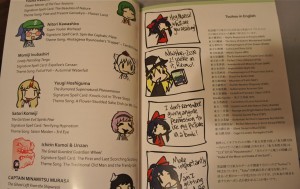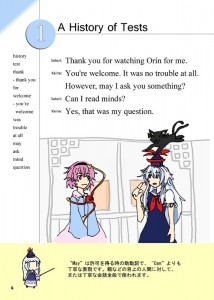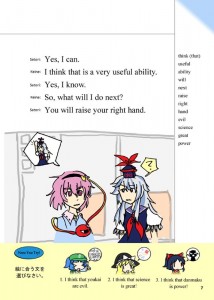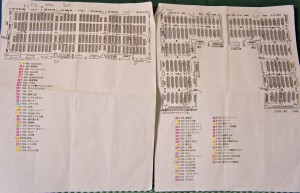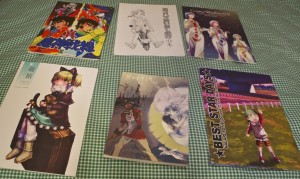After some twitter back-and-forths, I’ve decided to try to do a few posts where I introduce some of the stuff I picked up last Comic Market (C77), mostly just to prove to people that you can spend over $500 on interesting doujinshi and have basically none of it be pornographic. (Nozomu Tamaki pushed his ero book on me and who am I to deny that man a sale?)
Of course, to start off this series of posts, I’m going to basically mess up my entire theme by starting with a professionally published book from 2007. I did, however, purchase this book at C77, and it’s the closest one to my laptop, so I’m going to start with the first volume of Manga Ronso Boppatsu (マンガ論争勃発, “Manga Debate Eruption”, alternatively “The Manga Criticism War Erupts!”), authored and edited by Kaoru Nagayama, author of Eromanga Studies (East Press), and the journalist Takashi Hiruma.
Manga Ronso Boppatsu is a collection of nearly fifty short (2-6 page) articles on a variety of topics, most of which center around a single expert or critic’s thoughts on the topic at hand. The authors of the book state that the idea behind the book is to listen to various positions on each of these hot topics, such as the globalization of manga, creators’ rights, and the limiting of free expression in manga, so that constructive discussion can start taking place rather than the mindless, polarized shouting matches that’re all too easy to fall into when debating these issues.
I ended up getting this book (and its sequel) thanks to a tip from Vertical’s Ed Chavez, who sent me off in the direction of the far-left corner of the Big Sight’s East-3 hall, where I found a rather large table staffed by just one guy, who I assume was one of the authors of the book. The placement of their booth was a bit odd to me, as it was down in one of the doujinshi-selling halls (as opposed to the upstairs industry hall), but up against the wall where non-doujinshi products like markers and corn dogs are sold.
This was actually a rather appropriate place to stick these guys, as while their book is released by a professional publisher (Micro Magazine), the subjects covered in the volume either deal directly with doujinshi events like Comiket, or are extremely relevant to the ideals embodied by these events themselves: Spreading manga culture and providing a space where individuals can distribute works of free expression. I’m not just making this stuff up, either–the Comic Market Preparation Committee and the National Doujinshi Event Liaison Group are both prominently given credit for cooperation right next to the authors.
I mentioned that Manga Ronso Boppatsu is the closest book to my laptop, and there’s actually a reason for that; it’s basically the only thing I’ve been turning to as of late when I feel like educating myself on manga. While I’m still working through it, the articles I’ve read so far are all very informative and provide thoughtful views on whatever topic is at hand. Of course, there is a trade-off to gathering the breadth of experts that the book jams into a little over 200 pages, and that is that a relative lack of depth in any given article. However, the articles are all excellent primers on their respective topics given by some of the most respected individuals in their fields. Since it’d be nearly impossible to give my thoughts on each individual article, I’m simply going to spend the rest of this post below the cut translating each article’s title and the primary individual consulted or interviewed (when applicable), and strongly suggest the volume (available for purchase at Amazon and bk1.jp, among other places) to anyone with an interest in a mix of solid journalism and on-the-ground, current commentary on the state of manga and doujinshi.
Chapter 1: Manga is Spreading Across the World
The Current State of Manga Culture in Chinese-Speaking Regions – Au Yeung Yu Leung, otaku researcher
The Deep, Broad Universe of Manga in Korea – Sun Jung-Woo, manga critic
Japanese Manga in Thailand – Nekoshima Rei, manga author
The State of the Medium and Regulation in the USA – Odagiri Hiroshi, American comic researcher
Why Anime and Manga are Popular in France – Etienne Barral, journalist
In Spain, Manga Represents Japan
Let’s Guide Foreign Fans to Japan – Okada Maki, Japanese Resident Ambassador to Denmark
Manga Was a Worldwide Niche Industry – Nakano Haruyuki, manga researcher
Unauthorized Translations of Manga and Anime Found Online
Asian Piracy
Get Your Politician Involved – Sakai Masayoshi, associate professor at Waseda University GITS
What’re METI’s Policies?
Chapter 2: Doujin Culture: Sustaining the Japanese Content Industry
Doujinshi / The Manga Authors from Comiket – Misaki Naoto, doujinshi researcher
The Charm of Doujinshi Events
Testing Out Dispatched Editorial Departments – Nakamura Kimihiko, member of the Comitia executive committee
Do All Manga Lovers Come to Comiket? – Fudetani Yoshiyuki, co-representative of Comic Market, editor
Chapter 3: Manga and Copyright
The 1999 Pokemon Doujinshi Crackdown Incident - Sakata Fumihiko, Gataket representative
The “Doraemon – Final Episode” Doujinshi Incident
Is This a Black and White Situation? – Takekuma Kentaro, author, editor
The Meaning of Manga Plagiarism Verification Sites
Lessen the Scope of Copyright and Enforce it Strongly – Shirata Hideaki, assistant professor in the social sciences department of Hosei Univ.
Let Copyright Holders Decide – Matsumoto Leiji, manga author
Chapter 4: Expression’s Ground Zero
The Front Line of Censorship
From the Desk of a Professional Eromanga Editor – Shiyoama Yoshiaki, eromanga editor
Manga Authors’ Voices – Tamaki Nozomu, Yamada Sansuke, Hoshiai Hiro, manga authors
The Josei Crisis
Chapter 5: Obscenity and Harm
The “Harmful Books” Controversy
The Beginning of Doujinshi Censorship
The Day Otaku Moved Government – Nishikata Kouichi, former representative of the Manga Defense League
The Yokohama Conference and AMI – Dan Kanemitsu, translator
The Shobunkan Trial – Yamaguchi Takashi, lawyer
Higurashi / School Days / The Tokyo Trade Center
Chapter 6: The Current State of Censorship and Self-Censorship
Determining Harmfulness and Zoning - Aoyama Ayako, section chief for youth affairs for the Tokyo Metropolitan Government
Self-Censorship and Divided Exhibition
What is CERO Inspection?
Chapter 7: Freedom and Censorship
What Was the Virtual-Ken? (The Investigative Committee on the Protection of Children from Harms Brought on by the Virtual Society) – Maeda Masahide, professor in the college of general education at Tokyo Metropolitan University
What is Radical Feminism? – Nakasatomi Hiroshi, associate professior in the administration and social sciences department of Fukushima University
Manga Does Not Induce Crime – Saito Tamaki, psychiatrist, critic
Do the Problems of Expression and Censorship Oppose Each Other? – Ito Go, manga critic
Are Symbols and Reality Connected? – Ueno Chizuko, profesesor in the graduate school of humanities and sociology at Tokyo University
Expression Must Not be Restricted by Law – Chiba Tetsuya, manga author
Chapter 8: The Mass Media and Manga Culture
Misunderstanding and Prejudice
Media Literacy and the General Public – Ootani Akihiro, journalist
Otaku and the Media
Chapter 9: Manga’s Freedom
Being Prepared to Risk Your Life Over Freedom of Expression – Satonaka Machiko, manga author
Leniency in Japanese Culture – Azuma Hiroki, critic, philosopher
The Future That the “Anything Goes” Ideal Holds – Ichikawa Kouichi, Yasuda Kahoru Comic Market co-representatives


